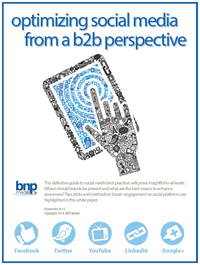A vendor creates the product and the distributor takes it to market; a simple, linear process that has evolved over many decades to best leverage the strengths of each player, and offset their weaknesses.
Vendors sell to many distributors in many markets while distributors sell many vendors in their local markets. It is a perfect fit, but too often, effective communication is lacking. The communication channels are heavily numbers focused with little to no discussion about market opportunities and customer needs that remain unfulfilled. In my 40-plus years in the DPH business, I don’t recall ever hearing the term “product market fit.” Have you?
In many instances, a vendor will present a new product to its distributors, and this is the first the distributors have heard, seen or interacted with it. The vendor has developed the product completely on its own and knows it will be a big hit. How does it know? Well, it has been around a while and knows distributors’ market needs and wants. But, doesn’t it make sense to get input from partners (the distributors)?
This lack of communication is why so many new product releases don’t go well, resulting in brands that have been around for decades, but still have very little recognition in the design market. These vendors insist they know what will sell; they do not think taking time to ask distributors to share knowledge of what is selling, and what their customers are asking for.
Vendors and distributors struggle at times to stay on the same page. Vendors stand by their product and distributors stand by their customers, but neither would exist without the patronage of the consumer. The foundation of this platform is not the vendor or the distributor, it is the end user whose cash fuels this entire process.
The customer might not know what he or she actually wants or needs. The customer wanted a faster horse, so Henry Ford created the automobile. How did he come to that conclusion? Mr. Ford listened to his market and then created his best answer. Without having any idea what the market is asking for, how can a company create the next great product?
Vendors and distributors each have a role and can attain tremendous success if they communicate effectively as if they were one company. If vendors and distributors do not communicate effectively, they will have misaligned strategies and out-of-sync tactics. This is not a recipe for success. This misalignment opens the door for impersonal websites, copy-cat manufacturers and creates opportunity for today’s fast moving, data driven DTC’s to easily leverage their pricing advantages and gain market share.
Both parties need to respect this age-old alliance and realize the best way to improve is to work together to please and support the end user financing our businesses.
I ask the question: How can vendors create a great market product fit when they have no direct interaction with the end user? It is impossible. They only have access to the data for what they sell. Sure, some vendors get out and talk to independent sales representatives and some showroom people, but this is only a small slice of what is happening in every showroom, and it is contaminated with our own personal bias.
Each of us, people and companies, sees the world through our own filters, which can remove actual marketing reality. This is why vendors need to get as much quality sales data as possible. Not opinions, but black-and-white data. With expert analysis, they can see what is actually happening in their target markets and start asking poignant questions whose answers will identify the market need for a new product. A true product market fit.
Customers and markets are changing faster than ever, and now we have the added effect of a pandemic. Do you really want to build a new product without having the best possible understanding of your market?
Both vendors and distributors lose when misaligned products are introduced. So why not talk from the beginning? Why not take the time to set goals and targets together? Why not share data that can help both build stronger brands? If we do not, other companies will.








